#ohsu doernbecher children's hospital
Text
Cult of the Lamb Stream is Live!
**Hey, look at that! We're Live!**
Coming up Tonight:
- An Embarassing Lack of sanitation
- In-Stream Viewer Conversions!
- Plenty of interrupting Blerps from chatters
- Extra-Life.org Charity Donations?
- YOU, in chat!
The stream is up and live, and we start broadcasting at 7:30 pm Pacific, so come join us! https://twitch.tv/ThymeFraym
twitch_live
#twitch streamer#twitchstreamer#small streamer#smallstreamer#twitch#livestream#stream#videogame#ohsu doernbecher children's hospital#extralife#extralife charity#charity#charity stream#blerp#channel points#roguelike#sim#management#Horror#CultofTheLamb#Cult of the Lamb#AudienceInteractive#Audience Interactive#LetsPlay#Let's Play#Massive Monster#MassiveMonster
0 notes
Text
You know, seeing the way misinformation from TERFs has caused it to be so hard to get accurate and safe information about binding, packing, promoting facial hair growth, and other ftm transition information makes me so mad.
I can’t look up safe binding practices without half the results being misinformation about how binding is always unsafe and that it prevents you from getting top surgery.
I can’t look up how to safely use transtape without seeing posts made by terfs lying and saying it’s the same as duck tape and will cause infections, bleeding, and it’s always unsafe.
I can’t look for facial hair growth tips for Transmascs not on T without half the results being terfs making posts saying it’s impossible, to just give up, and ‘accept my feminine nature’.
I can’t find accurate posts about packing without finding posts by terfs lying about how it’s ‘unsanitary’ and that it’s ‘impossible to make realistic so why even bother trying’.
There’s whole blogs and sites run by TERFs just to lie about things related to ftm transition. They want to make it seem like transitioning is impossible and that it’s completely unsafe. They want us to not mange out dysphoria at all and to be driven to suicide.
If you want safe information about anything dealing with transition don’t trust posts from unverified social media accounts or from sites you can’t verify are run by doctors or are not affiliated with an actual medical clinic - these people aren’t doctors and often don’t know what they are talking about. Go to clinic/hospital/health center websites. multiple clinics/hospitals/health centers have guides telling you how to safely bind and find the right binder size (link leads to a pdf about binding, mainly focused on binders, by OHSU Doernbecher Children's Hospital), how to safely wear + apply/remove KT tape/transtape (link leads to a pdf about binding resources by Fenway Health), and much more. Adding ‘clinic’ or ‘healthcare center’ in google searches about transitioning will help you find more trustworthy resources from clinics/hospitals/healthcare centers.
Many clinics/hospitals/healthcare centers that specialize in trans healthcare also have ways to contact them and ask questions about binding, growing facial hair, packing, etc., don’t be afraid to ask!
There’s also many spaces online where other trans people can answer questions and talk about their experiences. I recommend r/ftm, r/testosteronekickoff, and r/FTMMen. People there will be able to answer questions about facial hair, binding, packing, working out, hrt, etc. If you’re older then 30 and want a space to ask tips about starting T when 30+, tips for older transmascs, etc. I’d recommend r/FTMover30. I know these are all subreddits, but Reddit is honestly one of the best place to connect with other people in a community online. I promise you trans Reddit spaces are not like whatever idea of a ‘le redditor’ you have in your head. Most people in trans subreddits are just normal people who have questions or want to share their experiences. (NOTE: never trust Reddit more then a medical professional. It’s fine to get information like binder/tape brand recommendations, tips for masculinizing workout routines, etc. from Reddit. but if you have questions or concerns relating to safe practices of binding/taping, safely taking supplements/using oils to grow facial, or any side effect of HRT, blockers, or birth control go to a clinic/hospital/health center website or ask a medical professional not Reddit.)
#trans#transgender#trans man#transmasc#ftm#trans resources#I know this post focuses on transmascs/FTMs but if your transfem/MTF the places I link also have reasources for y’all#as for transfem/MTF subreddits I only know of r/MTF. I’m not Transfem/MTF so I dont know that much abt those spaces#if anyone wants to add on with online spaces/resources for transfems/MTFs feel free too. 👍#.txt
29 notes
·
View notes
Text
Nike Doernbecher Freestyle XVIII Collection
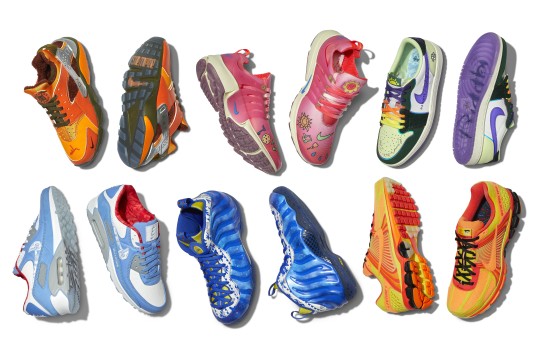
Nike believes in the power of sport to create change and a better world. The Doernbecher Freestyle program — which returns for an in-person auction on October 28 — reflects this belief through the unique partnership between NIKE, Inc. and Oregon Health and Sciences University (OHSU) Doernbecher Children’s Hospital.
Doernbecher Freestyle has raised nearly $31 million for the hospital since its inception in 2004. Each year, the program gives six OHSU Doernbecher patients the opportunity to create inspiring Nike footwear, apparel and equipment designs alongside a team of Nike Design employee volunteers. The patient-named collections are auctioned and sold to benefit the hospital as a signature fundraiser.
During a nine-month process, the patients work with a team of Nike Design volunteers to reimagine their medical journeys on their product collections. Employees review patient questionnaires and evolve the designs through multiple rounds of color and material feedback –– all alongside their patient-designers. Together, they bring the incredible collections –– and each patient’s vision and story — to life. The final designs are revealed in a much-beloved auction night that brings attention to the partnership and to the design partners’ labor of love.
In addition to sharing their personal stories, Doernbecher Freestyle provides the young patient-designers an opportunity to give back to the hospital and experience the joy of helping inspire other kids facing similar circumstances and health challenges. Nike Design employee volunteers count the chance to donate their time and expertise to the cause as a career highlight.
Among this year’s six Doernbecher Freestyle sneaker designs, you’ll find inspirations ranging from starry nights, fruit, investing, springtime, their heritage and their sunny dispositions.
The Doernbecher Freestyle XVIII collection will launch on SNKRS, the Nike App, Nike.com and at select retailers in early 2023.
Freestyle XVIII: Coley Miller


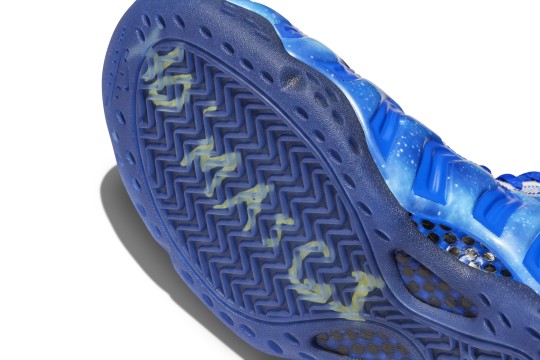
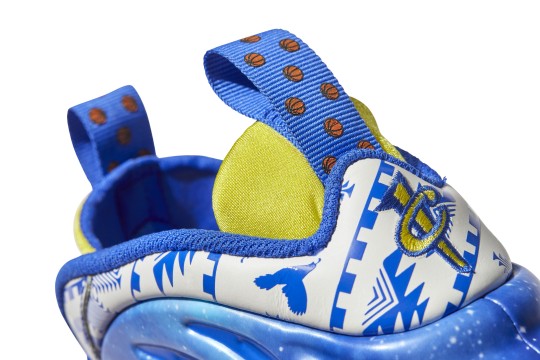

Freestyle XVIII: Dario Villaseñor Valdivia
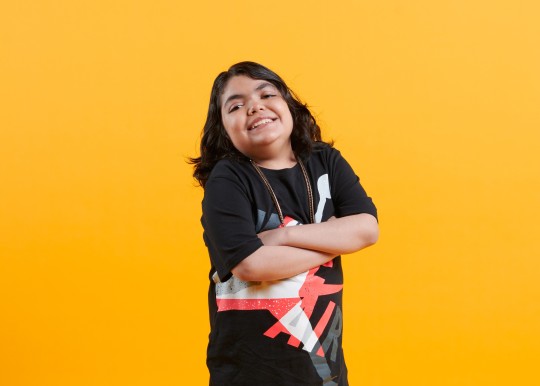
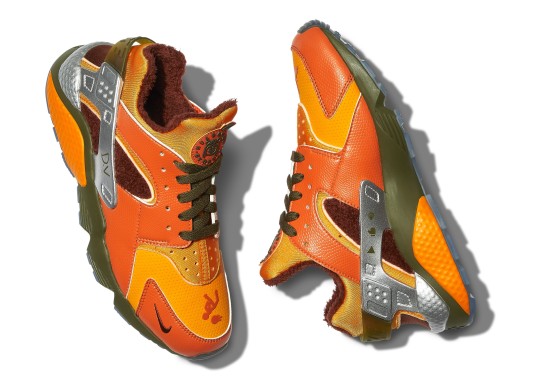
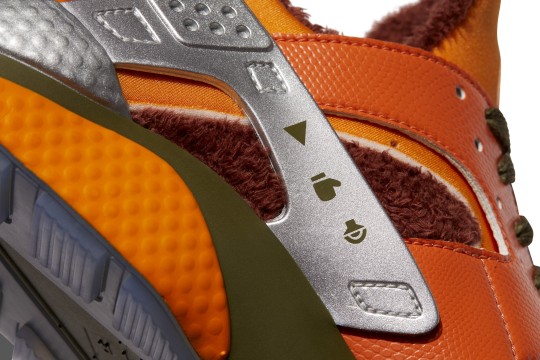
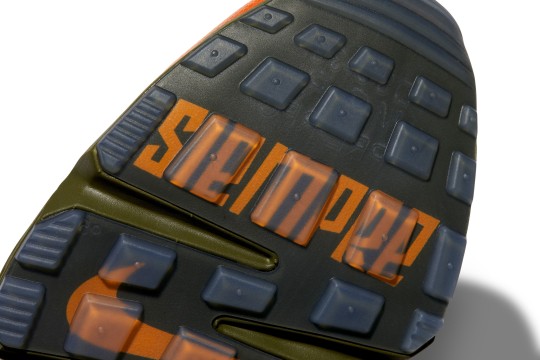

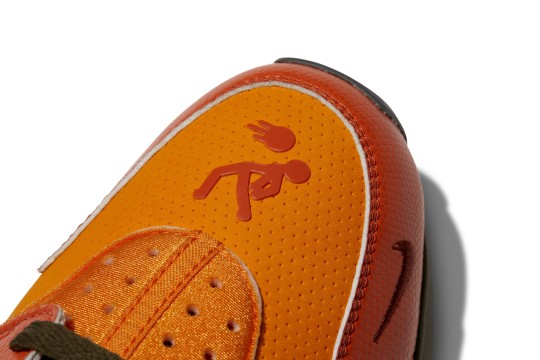

Freestyle XVIII: Emerson Harrell

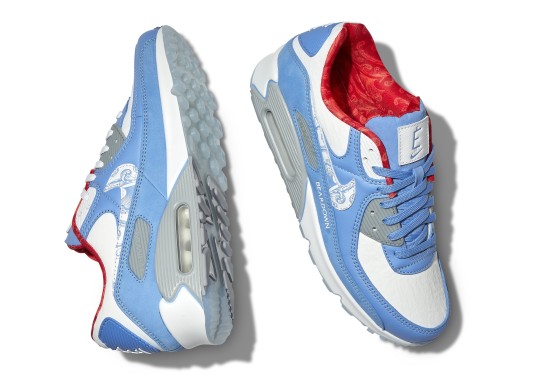
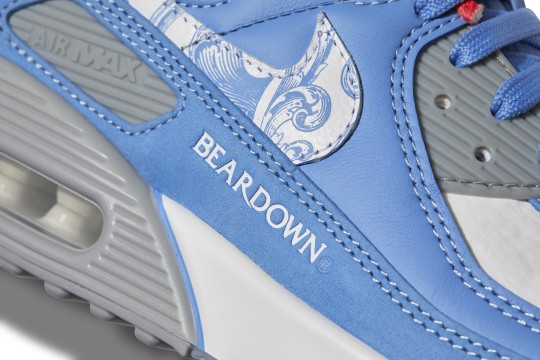
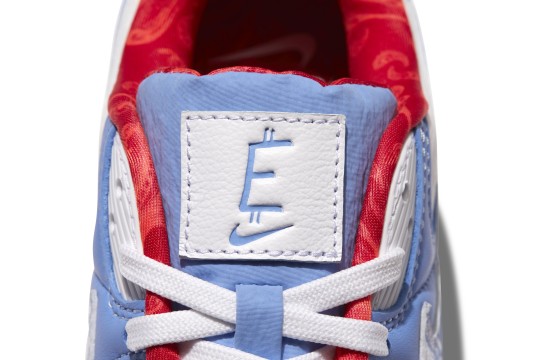
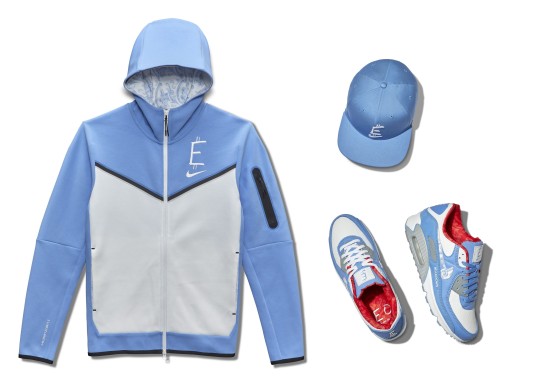
Freestyle XVIII: Jaren Heacock
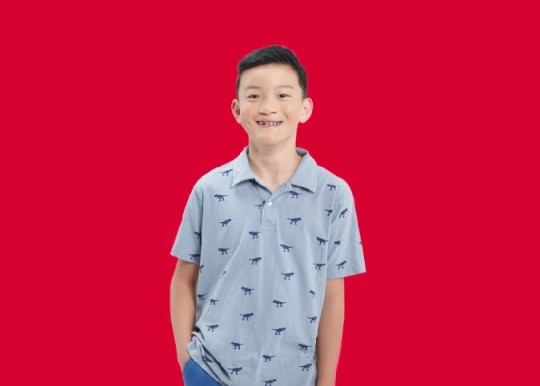


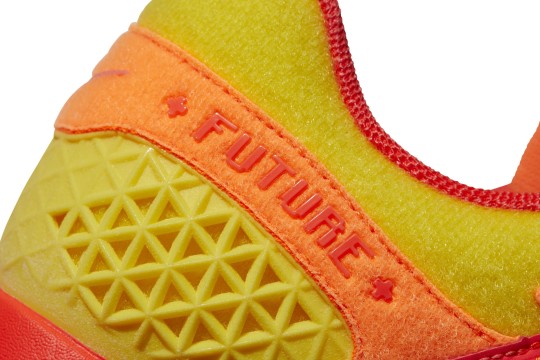
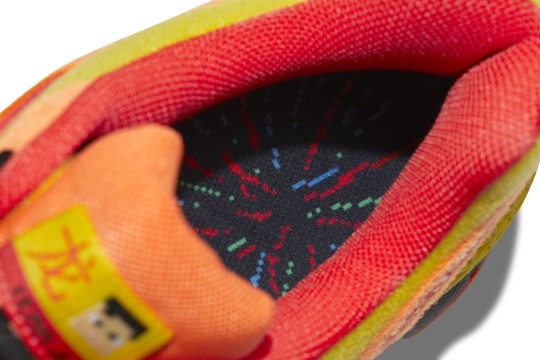
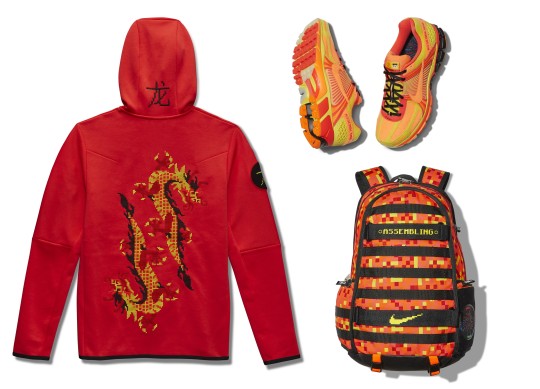
Freestyle XVIII: Riddhi Mahajan

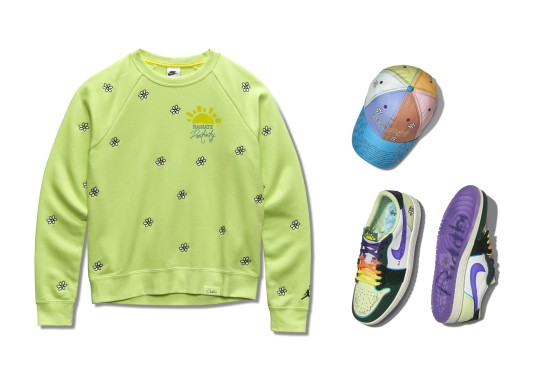
Freestyle XVIII: Kylee Young

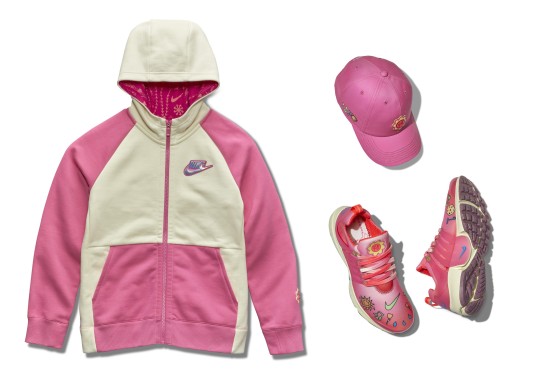
2 notes
·
View notes
Text
Nike Doernbecher Freestyle XX Sneakers Revealed
https://SneakersCartel.com Nike Doernbecher Freestyle XX Sneakers Revealed https://sneakerscartel.com/nike-doernbecher-freestyle-xx-sneakers-revealed/ https://SneakersCartel.com In 2024, the Nike Doernbecher Freestyle makes a highly anticipated return, marking two decades of the program’s impactful journey. This year’s collection continues the tradition of featuring unique sneakers designed by the resilient and creative patients of the OHSU Doernbecher Children’s Hospital, embodying their inspiring stories and creativity. Nike’s collaboration with these young designers not […] The post Nike Doernbecher Freestyle XX Sneakers Revealed appeared first on Sneaker Bar Detroit.
0 notes
Text
What Are the Various Types of Liver Cancer?
The liver is affected by various distinct types of cancer. Some, like hemangiosarcoma, proliferate. Others, such as hepatoblastoma, are more uncommon. Children with cancer are treated expertly at OHSU Doernbecher Children's Hospital. You may be referred for a liver biopsy if you suspect you have liver cancer.
There are two forms of liver cancer: primary and metastatic. Primary cancer develops in the liver, whereas secondary cancer develops in another organ. For example, metastatic colon cancer begins in the colon and spreads to the liver. Primary tumors are significantly fewer than metastatic cancers, yet the prevalence in the United States has tripled between 1975 and 2014. An estimated 41260 persons will be diagnosed with liver cancer in 2022.
Patients with liver cancer who are diagnosed early are more likely to survive. The majority of survivors live for five years or more after their diagnosis. Unfortunately, when cancer has progressed, this timeframe is reduced. Fortunately, the survival rate for liver cancer has increased in the last decade. If you've been diagnosed with this disease, you should consider setting quality-of-life objectives. You may wish to consider participating in clinical trials to increase your chances of complete recovery.
A mutation in the DNA of liver cells causes liver cancer. DNA serves as the blueprint for every chemical action in the body, and a mutation can cause cells to proliferate uncontrollably and develop tumors. Some causes of liver cancer are well understood, such as chronic hepatitis infections, but others remain unknown. The illness is frequently linked to other conditions, such as obesity and excessive alcohol usage.
There are various therapy options for liver cancer. One treatment that lowers the blood flow to a tumor is chemoembolization. The procedure involves introducing tiny radioactive beads into the hepatic artery. Because the radiation is directed at cancer, the treatment may halt the progression of liver metastases. It can also help with the symptoms of liver cancer when no other treatments are available.
Treatment for liver cancer varies according to the type of cancer. Hepatoblastoma, for example, is typically diagnosed in children aged three to five. Blood chemistry testing and imaging modalities can be used to diagnose it. To reduce malignant cells, neoadjuvant chemotherapy is frequently used. If this fails, surgery may be necessary. Patients with this cancer will most likely live for a few years.
A detailed medical history, including a physical examination, is used to diagnose liver cancer. The doctor may also search for prior malignancies. A history of binge drinking could also be a problem. Furthermore, the patient may be infected with hepatitis B or C. Imaging, and blood testing can also be used to diagnose liver cancer. This will reveal whether or not the malignancy has spread. These tests can frequently discriminate between different forms of liver cancer.
The most frequent type of liver cancer is hepatocellular carcinoma. Chronic alcohol consumption, hepatitis C, and hepatitis B virus are the main risk factors. Other risk factors, such as a1-antitrypsin deficiency and hemochromatosis, exist. Cirrhotic patients are also more likely to develop HCC.
The disease's prevalence is rising worldwide, with Mongolia having the most significant frequency. Alcohol consumption is the principal factor in most Asian, Central, and Eastern European countries. Non-alcoholic steatohepatitis is gaining popularity and is predicted to overtake alcoholic steatohepatitis as the primary cause of HCC in high-income nations.
In the previous decade, liver cancer treatments have greatly improved. Depending on the level of liver involvement, a patient may be suitable for local curative therapy or surgery. However, if the disease has spread, therapeutic options may be restricted. In this situation, the patient may receive chemotherapy, radiotherapy, or a liver transplant, popular treatments for advanced HCC. Although not ideal, these treatments can typically enhance survival.
HCC is the most common type of inflammation-related cancer. It is responsible for up to 90% of all HCC instances and is linked to chronic inflammation, such as excessive alcohol consumption, NAFLD, and NASH. According to mouse studies, the immunological microenvironment plays a significant role in disease development. It is linked to a better prognosis in patients with immune infiltrates, presumably because these immune cells create anti-tumor immunological signals that slow tumor progression.
0 notes
Text

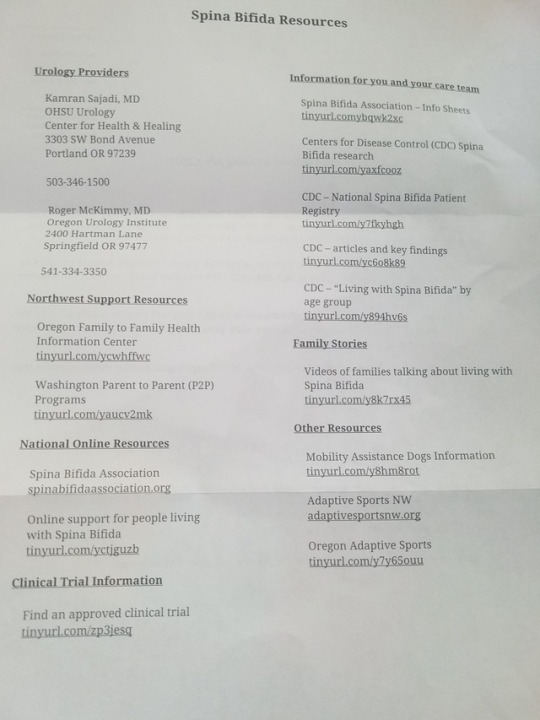
Words cannot accurately describe how this makes me feel. Not only because the Spina Bifida clinic that I've gone to all my life is closing for adults like me & many of my friends, but because of how they handled it. I am so disappointed & sad. I feel like their clinic was the one place I could go where I was understood. My body was understood. Even if it was only for once a year annual check ups. I knew that if I was getting subpar care anywhere else, that at least I had the CDRC Spina Bifida clinic to fall back on. And now I don't. We don't. I heard from the majority of my SB friends from Oregon this week & they shared my feelings about it. They gave us less than a month of notice that it was closing. They provided a list of resources.....ones that can be found by googling "Spina Bifida resources"...& they just copied/pasted the first ones that came up, I feel like. I feel like they didn't even try. It feels like a slap in the face. This is how it ends after my 30+ years there? Really?? They provided us w/ names of urologists who are good w/ SB, but what about neurosurgeons? What about orthopedics? What about PT? What about all the many types of services & care they were providing for us to keep our bodies running? I know I'll be fine because I can advocate for myself & my healthcare. But what about those who can't? What do they do? Where do they turn? I just feel like we deserved better than a generic letter in the mail. I'm angry & sad....but I guess I'll just have to redirect those feelings into working w/ my other drs & trying to get them to understand even better how to provide care to someone w/ Spina Bifida...something I shouldn't have to do anyway...but that (unfortunately) is necessary, especially since I now don't have the one place that did know their stuff, to fall back on. I know that I was lucky to have had a Spina Bifida clinic at all, especially as an adult. Most states don't have that. For that I am appreciative. I just wish they had been a little more considerate to us about the way it was ending.
@brittz1990
#spina bifida#oregon#spina bifida clinic#adults with spina Bifida#ohsu#cdrc#cdrc spina bifida clinic#doernbechers childrens hospital
0 notes
Text
Ecliptic Brewing and PDX artist legend Mike Bennett team up to support Children’s Healing Art Project.
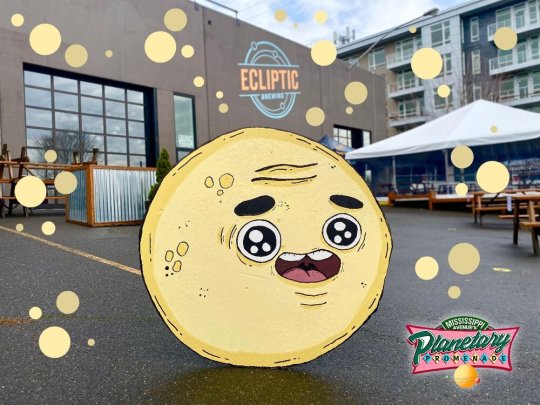
Press Release
Portland art icon Mike Bennett is mobilizing his huge fan base – including 1.5 million followers on TikTok – to support the local nonprofit, Children’s Healing Art Project (CHAP). In January 2021, Mike brought the solar system to North Portland by placing painted planets throughout the Mississippi neighborhood. He called it his Planetary Promenade. Each planet will be auctioned off between May 12th and May 19th in an online auction benefiting CHAP.
The online auction of all 10 planets begins May 12th and ends May 19, with an outdoor celebration at Ecliptic Brewing where Mike will also create a live piece of art for the auction. Go to: https://bit.ly/3bysHzU to place bids. 10% of all food and drink sold at Ecliptic Brewing on May 19th will be donated to CHAP. Masks are required at the event, except when eating or drinking.
Mike Bennett has been entertaining families with his fantastic art creations for the past few years and especially throughout the pandemic with the goal of giving people a reason to get out, to see art, to smile, and to experience something special. The pivot this past year brought his love for art and education alive. The visual artist has a passion for bringing cartoons into the real world with reclaimed wood and old house paint. Mike has created over 3000 wooden cutouts based on pop culture, internet memes, and family-friendly educational content. Mike spent most of 2020 creating massive, interactive art displays in a similar style to bring fun and education to families in his neighborhood. He has picked up a large following with 1.5 million followers on TikTok and earned the title “Public Joy Creator”. More info: https://bit.ly/3tVuuVO
CHAP brings the healing power of art to children and families facing medical challenges. At CHAP, children are known for their creativity and ingenuity — not by their disease, diagnosis or disability. Celebrating its 15th anniversary this year, CHAP has been visiting hospitals weekly to provide healing art experiences for children and families. Since 2006, over 75,000 children have enjoyed healing art experiences through CHAP. Like many nonprofits, CHAP is experiencing the strain of the pandemic. When CHAP’s 15 weekly art-making sessions for children and families in Portland area hospitals were suspended in 2020 (at OHSU Doernbecher Children’s Hospital, Harold Schnitzer Diabetes Health Center, Shriners Hospital for Children, Providence St. Vincent Medical Center, and more), CHAP quickly pivoted to deliver their mission in new ways through virtual programming and free art supplies. More info: https://bit.ly/33SghOW
“We can’t think of a better way to raise funds and raise awareness about CHAP than to partner with a fun, creative artist like Mike Bennett,” adds Barb McDowell, Executive Director of CHAP. “I invite everyone to come out to Ecliptic Brewing on May 19th to see Mike’s planets one more time, place their final bids, and enjoy a good time together for a great cause.”
Email: [email protected] | Phone: (503)243-5294 | 8065 SE Grand Ave, Ste 160 Ave, Portland, OR 97202
Ecliptic Brewing is a venture from John Harris, an Oregon craft brewing icon. As a result of his efforts at McMenamins, Deschutes and Full Sail, craft beer lovers have been enjoying John’s beers for over thirty years. The name Ecliptic Brewing unites John’s two passions: brewing and astronomy. The ecliptic is earth’s yearly path around the sun, and Ecliptic Brewing celebrates this journey though the seasons with the food and beer they make. Ecliptic beers can be found in restaurants and retail shops in Oregon, Washington, Northern Idaho, Colorado, North Carolina, and Japan. More info: https://bit.ly/3yiYJcL
from Northwest Beer Guide - News - The Northwest Beer Guide https://bit.ly/3tYkxHf
1 note
·
View note
Text
#RomanReigns visit at the
OHSU Doernbecher Childrens Hospital in Portland (June 25,2019)
50 notes
·
View notes
Text
Nike Air Zoom Pulse Is made For Health Workers
air max 270 black sale Nike is actually renowned intended for creating shoes or boots for top-notch runners and also professional field hockey players, but thus to their latest sneaker, they’ve saved the health worker at heart. Dubbed the environment Zoom Heart beat, they’re specifically designed for this unsung heroes of which work throughout hospitals, such as nurses, medical professionals, and property health suppliers.
nike air max 270 mens Made with the aid of OHSU Doernbecher Children’s Medical center, the casino shoe features an uncomplicated slip with and off design that’s required especially throughout life or death circumstances. The streamlined and simple llok offers the optimum volume of comfort as well as traction, meeting many of the physical and also mental medical center conditions.
nike air max 270 sale An flexible strap preserves the wearer’s ft . secure, while move tabs at the tongue and also heel in addition make an appearance with regard to convenience. Nike’s Asterix brand graces the side panels, in order to round everything off, Zoom Air technology is required within your midsole for all-day don. Set in order to drop someday in December.
nike air max sale uk The Nike Air flow Zoom Pulse will release with six Doernbecher Freestyle colourways about December Seventh, with most profits given to OHSU Doernbecher Children’s Clinic. Let us know very well what you see this shoe, and ensure that you keep the idea locked in the Sole Supplier for the latest and also greatest sneaker news and releases.
1 note
·
View note
Photo
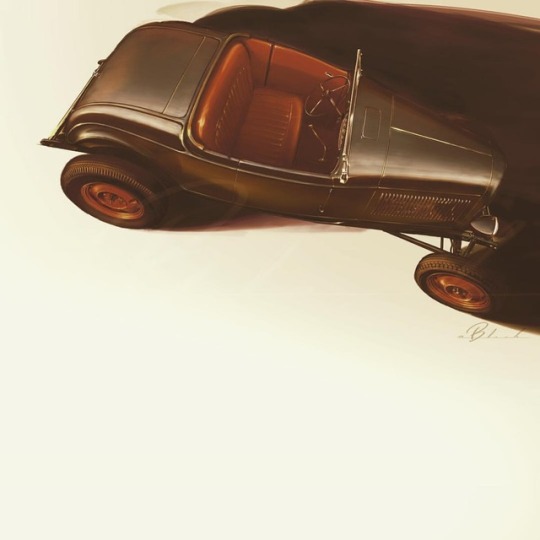
Itching to get back at it. I’m very thankful to have such patient and understanding clients. #eBlackaDesignCo #EndlessPursuitOfTheTimeless #VintageAutomotiveDesign #eBlackSpecialProjects #history #tradition #timeless #HAMB #hopuplive (at OHSU Doernbecher Children's Hospital)
#hamb#history#hopuplive#tradition#vintageautomotivedesign#timeless#eblackadesignco#eblackspecialprojects#endlesspursuitofthetimeless
351 notes
·
View notes
Text
October 10 2018
Since young age I’ve gone to OHSU Doernbecher Children Hospital and this brings nostalgia. Even though I’ve moved to the adult side, specialists still do this at OHSU which lightens the mood and alleviates a stressful moment.
For me my radiation oncologist makes jokes and ‘’steals” a bowl of chocolates and hands me a bunch. Sometimes it’s just the simple things that brings some relief to a patient.
In today’s health care system there’s little to no interaction with the patient, where I have gone in the past they are glued to the computer screens while asking simple questions and not hearing the patients concerns.
1 note
·
View note
Text
Stream Reminder: Live at 7:30pm Pacific
Hey Friends! Do you feel like it's been too long since you've given proper attention to your Dear Leader? Well, I might just have the thing for you! At 7:30pm Pacific tonight (10:30pm Eastern, 7:30am GMT). We've prepared the commune for worship, and we're ready to jump back into the wild world of Cult of the Lamb.
Both channel point integration and participation in viewer indoctrination (a viewer raffle to have your username become one of the cultists in-game) are active. Join us, help or hinder us when the opportunity presents itself, and contribute to the Twitch Totem!
Tonight: Last session we took out Old God #2. We know up front we have two followers dying, and so we'll have to deal with that (I think food this time). Oh! And more outhouses. I really need more outhouses.
Tonight is our final Extra Life stream as well... it's your last chance
Hope to see you there! https://twitch.tv/ThymeFraym (7:30pm - 10:00pm Mondays and Wednesdays)

#twitch streamer#twitchstreamer#small streamer#smallstreamer#twitch#livestream#stream#videogame#ohsu doernbecher children's hospital#extralife#extralife charity#charity#charity stream#blerp#channel points#roguelike#sim#management#Horror#CultofTheLamb#Cult of the Lamb#AudienceInteractive#Audience Interactive#LetsPlay#Let's Play#Massive Monster#MassiveMonster
0 notes
Photo
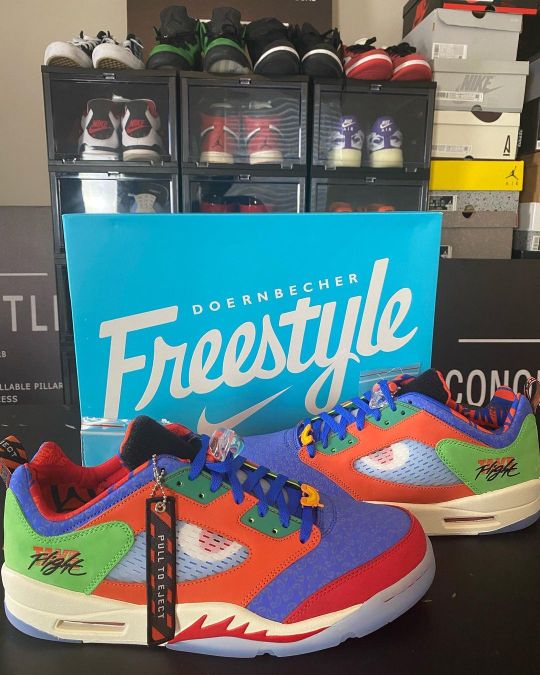
Air Jordan 5 Retro Low DB ❤️ Designed by 11 Year Old Michael "Spitfire" Wilson from Oregon, a part of Nike and OHSU Doernbecher Children's Hospital, where young former patients design sneakers with all profits benefiting to raise over $30 million to help save lives, develop new treatments and provide the best care for kids #AJ5 #Doernbecher #Nike #OHSU https://www.instagram.com/p/CdO7HK3AMu8/?igshid=NGJjMDIxMWI=
0 notes
Text
Nike The Doernbecher Freestyle XIX Collection

Doernbecher Freestyle is a unique partnership between NIKE, Inc. and Oregon Health and Sciences University (OHSU) Doernbecher Children’s Hospital that began in 2004 and has raised more than $33 million for the hospital since its inception. Each year, the program gives six OHSU Doernbecher patients the opportunity to create inspiring Nike footwear, apparel and equipment designs that are auctioned and sold to benefit the hospital as a signature fundraiser. Created with a team of Nike product experts, who are each volunteering their time and expertise, each patient’s collection items are adorned with intricate details, hidden messages and unexpected color palettes to represent their individual passions, life experiences, medical journeys and relationships.
Doernbecher Freestyle is important to the culture of both Nike and OHSU Doernbecher, allowing doctors, nurses, hospital employees, sneaker and apparel designers and developers, and community members alike to come together to make a difference in the lives of Doernbecher Freestyle patient-designers, their families and the hospital community. One hundred percent of the profits from retail sales of the Doernbecher Freestyle program are donated to the Oregon Health Sciences University Foundation (OHSUF) benefiting Doernbecher Children’s Hospital.
The Doernbecher Freestyle XIX Collection features six silhouettes from six amazing Doernbecher patient designers: an Air Jordan III, a Nike Dunk High, a Nike Go FlyEase, a Nike ACG Mountain Fly 2 Low, a Nike Cortez and a Nike Air Max 1 ’86. The silhouettes will release in December.


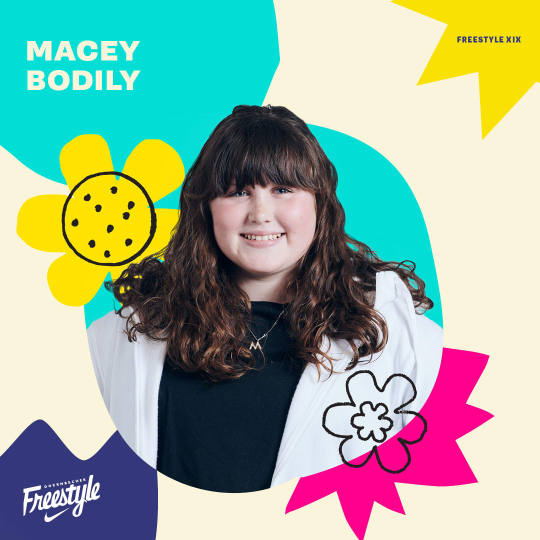
Doernbecher Freestyle XIX: Macey Bodily

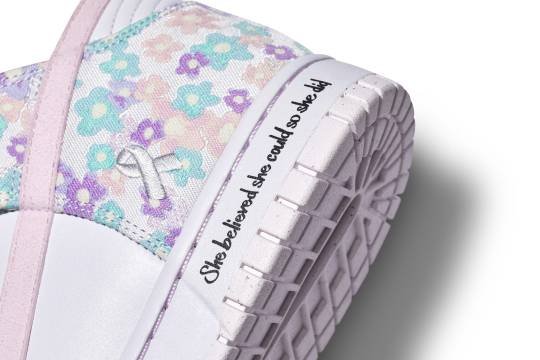
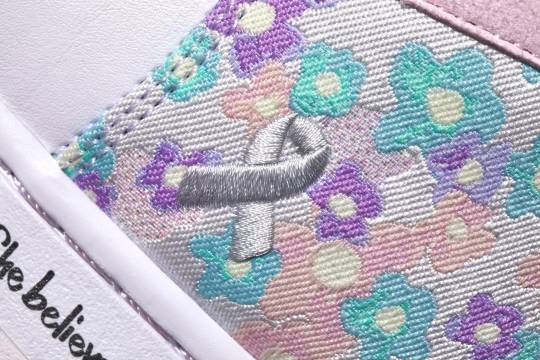

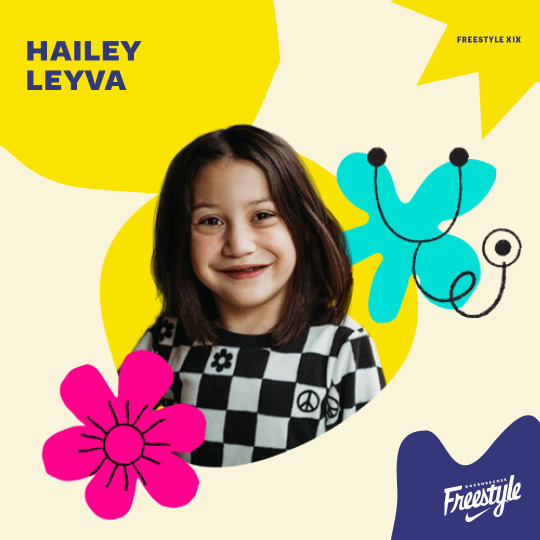
Doernbecher Freestyle XIX: Hailey Leyva
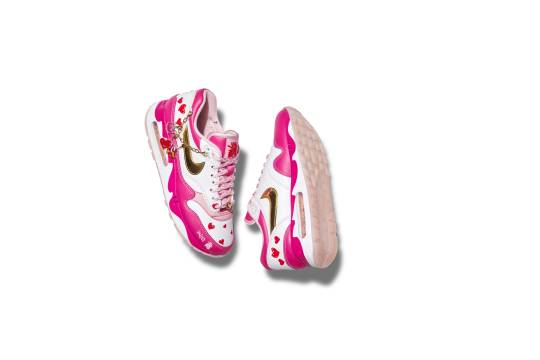



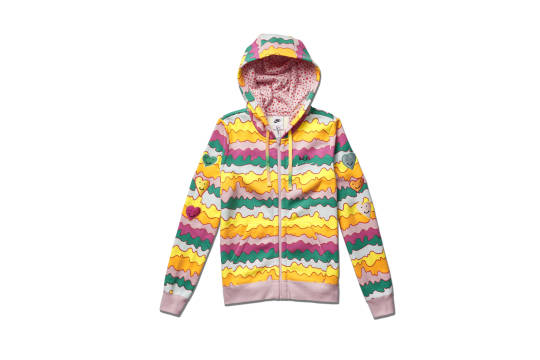


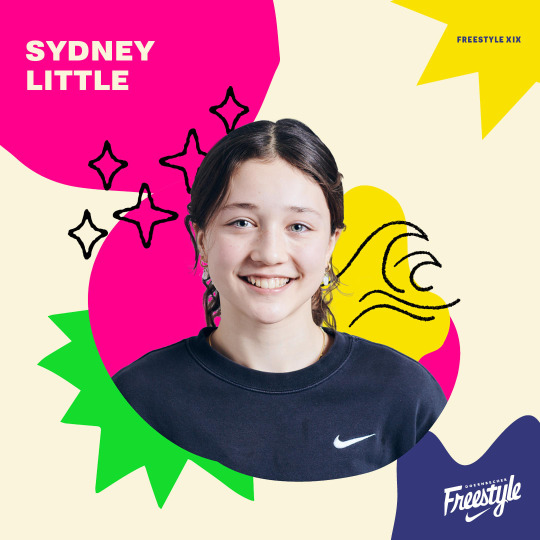
Doernbecher Freestyle XIX: Sydney Little



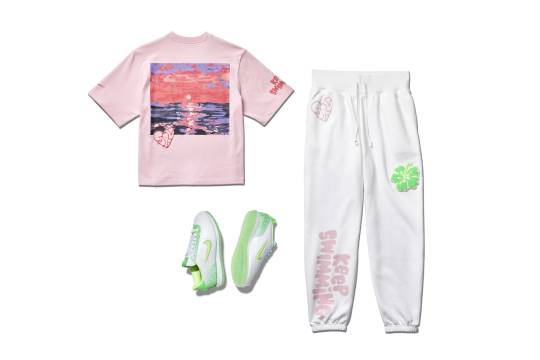
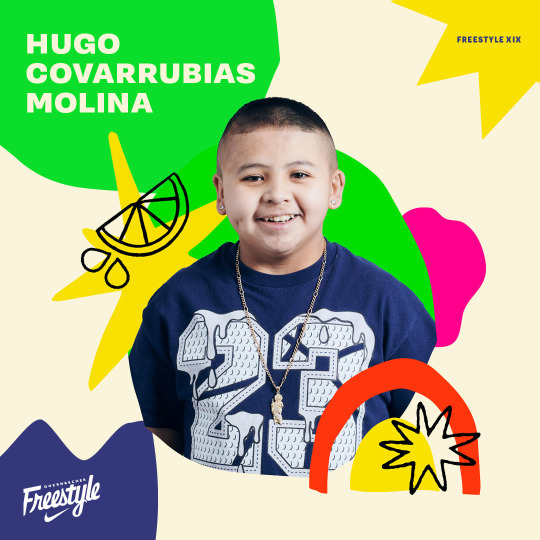
Doernbecher Freestyle XIX: Hugo Covarrubias Molina
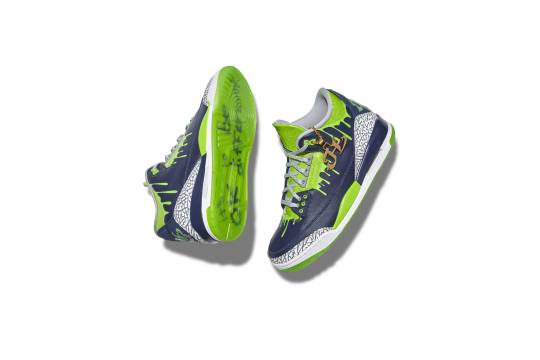

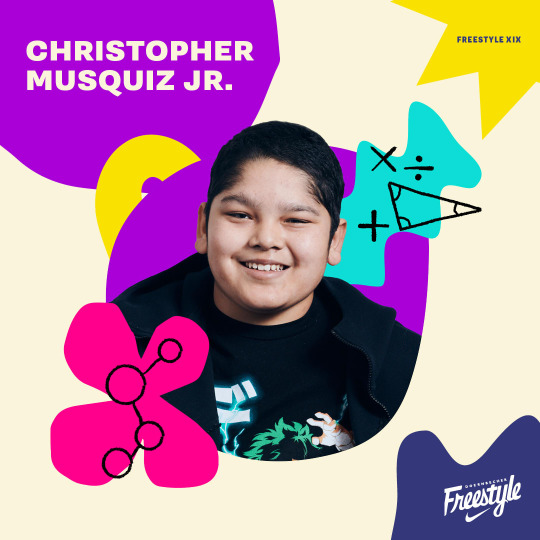
Doernbecher Freestyle XIX: Christopher Musquiz Jr.
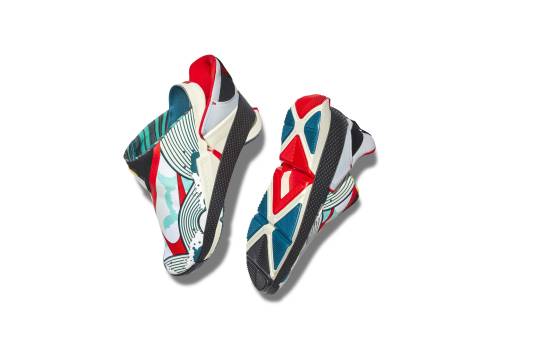

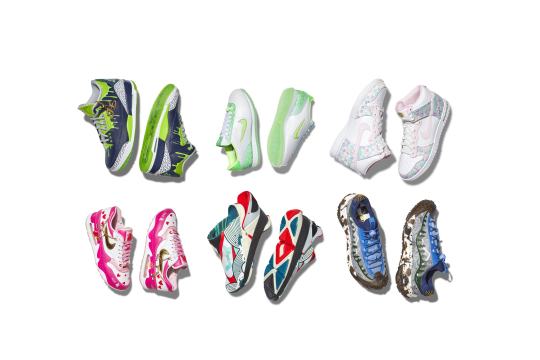
1 note
·
View note
Text
Release date Air Jordan 5 Low Doernbecher DR6287-486
Release date Air Jordan 5 Low Doernbecher DR6287-486
2022 marked the long-awaited return of the Doernbecher Freestyle, whose 17th iteration includes seven new patients from the ever-talented OHSU Children’s Hospital Doernbecher. And among this collection, which, after a series of charity auctions on eBay, will soon hit wider retailers, Michael Wilson’s Air Jordan 5 Low is arguably the most exciting offering.
Two months after his birth, Wilson was…
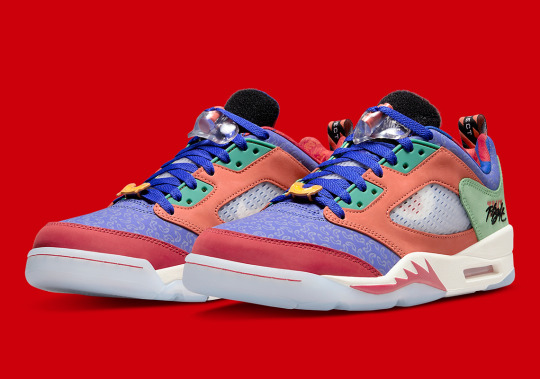
View On WordPress
0 notes
Text
Emma Olson Jackson, MS, ARNP - phaware® interview 342
Emma Olson Jackson is a Pediatric Nurse Practitioner at Seattle Children's Hospital. In this episode, she discusses her history in helping develop pediatric pulmonary hypertension programs across three different specialty centers. Emma also discusses the challenges that pediatric programs face in treating this disease.
My name's Emma Olson Jackson, and I am a pediatric nurse practitioner in pulmonary hypertension here at Seattle Children's Hospital in the heart center. I've been a pediatric pulmonary hypertension nurse practitioner since 2012, where I started at UCSF Benioff Children's Hospital, developed that program there, and I was there almost four years and then I moved up to Portland, Oregon and was at Doernbecher Children's Hospital, which is an affiliate of OHSU Medical Center, and did pulmonary hypertension there, and now I'm at Seattle Children's.
I was a bedside nurse before I was a nurse practitioner in the cardiac ICU at UCSF, and I knew Jeff Fineman, MD really well. When I was finishing my graduate school education and getting my NP license, he was also at the same time trying to get funding to hire the first pulmonary hypertensive nurse practitioner at UCSF. He convinced me that this was the field that I should go into and work with him, and it was an awesome decision. I didn't really know what I was getting into, but he such a wonderful provider, and he's done so much research on pulmonary hypertension, and he's a wonderful teacher and just in general, a great team member. Starting in that environment was really wonderful, so I just learned so much. Then once I dove into the world of pulmonary hypertension, I knew I never wanted to leave it, and that's kind of where my passion has been. So the whole time I've been a nurse practitioner, I've specialized in pulmonary hypertension, which has been really valuable for me.
I am from the Pacific Northwest. I grew up in a town called Bellingham, that's north of Seattle, and the program in Portland, kind of cold called me and had heard my name, and had a position opening within cardiology in pulmonary hypertension. They were wanting to grow their pediatric pulmonary hypertension program. At that point in time, I really was not looking to leave UCSF. I was very happy at that program and I felt like we had accomplished a lot and we had a lot of momentum, and the program was growing and I felt really close to my patients there and the team, but at the same time, I knew eventually I wanted to be back in the Pacific Northwest to be close to my family.
I had a sister in Portland and when the opportunity presented itself and I started to be recruited there, I felt like there might not be another opportunity. There's very few pulmonary hypertension nurse practitioner positions in the nation, and to have one open up kind of where I thought eventually I wanted to end up (was a important). I wasn't really ready to leave San Francisco, but I was worried that if I didn't take the opportunity, I might not have another opportunity to move closer to my family. So that's why I decided to take that position.
Once I was in Portland, it was a big difference just from going from a really big pulmonary hypertension program to a much smaller pulmonary hypertension program. I pretty quickly realized that I wanted to be part of a bigger program, and lucky for me, Seattle Children's actually got funding for a nurse practitioner when I was in Portland. People already knew that I was there, and so Seattle reached out and then recruited me up to Seattle, which was a pretty easy recruit, because I wanted to be in a bigger program, so it was awesome.
I think it was a really good experience for me to be also in a smaller program to see the challenges. There's still patients in Oregon and everywhere else that do end up being seen in smaller programs, and they need to have strong pulmonary hypertension program, as well. I learned a lot now that I've been in three different pediatric pulmonary hypertension programs. Everybody does things a little bit differently, and every provider has a different style of care. I think it's been really amazing for me to learn from all those different providers and teams and take what I like and what I don't like from every place and just learn more about how to best take care of this pediatric population that's really challenging.
I think pulmonary hypertension is rare, as you know. In pediatrics, it's even more rare. I think it's a really niche specialty. One of the things more people are recognizing is that there kind of does need to be centralized care for these patients, because it's complex, and there needs to be experts caring for them. I think because the numbers in general are small, because it's a rare disease, that there's just less comprehensive centers that have enough volume to justify having advanced practice providers in that specialty.
Seattle Children's is both a comprehensive care center through the PHA for pediatric pulmonary hypertension, and they're also part of the PPHNet, which is the Pediatric Pulmonary Hypertension Network of North America. I think in general, the pediatric pulmonary hypertension world is small, and it's a really close knit community. That's something I love about this field of medicine, is that we're always communicating with each other and sharing ideas and protocols and guidelines and getting advice from each other. There's no secrecy from program to program about how people are doing things, and there really doesn't seem to be very much ego, which I think is sometimes rare in medicine between programs. We're not trying to compete with each other. We're really trying to be cohesive and collaborative to provide the best care for this population, which I love.
Some of the challenges in this field is because it's rare, and the numbers are relatively low when you compare it to other types of heart disease, that it makes it hard to really figure out best practices or best medical systems. We might think what we're doing is best, but actually we don't know what someone else is doing, or when we're comparing all the numbers together, it's really difficult to do randomized controlled trials to figure out what combination of medicines are the best. Working with a rare disease, it's challenging to have enough numbers that bring valuable research. So it's imperative that we form these different networks of multiple pediatric pulmonary hypertension centers, because that's the only way we're going to really answer big questions is by collaborating, putting together all of our data to figure out what's the best practices for this group of patients. But it's also a challenge, because that also takes a lot of time and effort in enrolling patients and putting in their data into these big registries, and then at the same time, it takes years of putting in that data and then multiple more years of interpreting that data before there is a change in practice.
We're doing such a better job of treating pulmonary hypertension than we were even 10 or 15, 20 years ago, and these patients are doing better and they're surviving longer and they're having higher quality of life, and we have more medications available. I think we're treating earlier and more aggressive and giving kids a really fulfilling, healthy, longer life. It's great that we do see these patients transitioning, and that's something we think about, and it's really imperative that we are working with adult centers that we trust and that we have our values and the way we care for patients aligned. We really work really closely with our adult colleagues, and really do the transition to adulthood in a thoughtful manner and in a way that prepares the child for the differences in an adult center, and at the same time, still offering our support. We tend to do a staggered transition where they meet the adult provider, sometimes we try to have them meet the adult provider before they actually go and transfer care. We're hoping to work through a system where then maybe we actually attend maybe the first appointment at the adult center so that we can act as a buffer and fill in the gaps of the clinical history that maybe didn't make it in the record change.
Another big piece of transitioning to an adult program is making sure that the child or adolescent really understands their disease and their medications, and getting them independent as possible, because once you transitioned to that adult program, there's much, much less ... I don't want to say handholding, but they assume that you take charge of your own care and that they're not double checking that you understand every piece of it.
It's our job as pediatric providers to make sure, in the years before transition, and we start talking about this sometimes when a patient's 11 or 12, even though they're not going to be transitioning until they're 18 or 19, sometimes 21, is that every time we see them in clinic, we try to think of a new topic to teach them of part of their disease, and are working with them understanding their disease and understanding their medications and being able to tell us what their medications are instead of us telling them and having them agree. When we go over medication lists when patients are younger, we just say, "Are you taking this, this and this?", and as they get older we say, "You tell us what you're taking, and what's the dose, and how frequently?", to empower that child to really take charge of their own health and understand their disease and the medications and why they're taking them.
The diagnosis of pulmonary hypertension is a challenging diagnosis to receive, and I think that when you're a newly diagnosed patient it’s really to try to think about one thing at a time and to remember, especially in pediatric, that every patient is really different, and the etiologies for pulmonary hypertension can be very different from kid to kid. I find sometimes that patients, especially newly diagnosed, kind of compare themselves to other patients with pulmonary hypertension, and that's a really challenging thing to do, because I think every case is so different to really hone in on your own child and their issues and level of disease and medical management and try to get to know that and really learn what's best for your child before you try to compare your child to other cases, especially cases that have had pulmonary hypertension for a long time, or that have really different reasoning for having pulmonary hypertension.
I think one of the challenges I see over and over again with newly diagnosed pulmonary hypertension is that because it's rare, parents want to reach out and find similarities with other pulmonary hypertension patients almost too soon before they really get to know their own child and their own child's disease, and that's not to discourage connecting with other parents, but that's just to learn your own child and their own disease and their own medications before you start to compare another child to your own.
Every parent wants to do their best for their child, and every care provider wants to do the best for their patients, and sometimes it takes time to figure out what that best practice is, and what I like to tell patients, especially new patients, is that we need to have patients and us getting to know the child and the parents getting to know their child with this new diagnosis. It takes time to figure out which medications or combination of medications work. Sometimes there's not really quick, fast answers, and it's a process that we get to do together, and it takes time. So sometimes there's not answers right away.
My name is Emma Jackson, and I'm aware that I'm rare.
Learn more about pulmonary hypertension trials at www.phaware.global/clinicaltrials. Never miss an episode with the phaware® podcast app. Follow us @phaware on Facebook, Twitter, Instagram, YouTube & Linkedin Engage for a cure: www.phaware.global/donate #phawareMD #ClinicalTrials @seattlechildren
Listen and View more on the official phaware™ podcast site
0 notes